If you have a philodendron plant that’s been looking a little off lately, it may be suffering from root rot. Root rot is a common problem with philodendrons, and it’s important to catch it early so that you can save your plant. In this article, we’ll go over the signs of root rot, the causes, and the solutions. With a little care, you can get your philodendron back to good health in no time.
Types of Root Rot
There are four main types of root rot: Pythium, Rhizoctonia, Fusarium, and Phytophthora. Each type of root rot is caused by a different type of fungus.
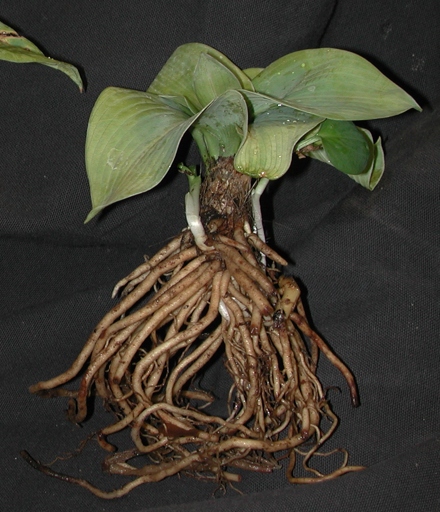
Pythium root rot is caused by the Pythium fungus. This fungus thrives in wet, poorly drained soils. Pythium root rot is the most common type of root rot in philodendrons.
Rhizoctonia root rot is caused by the Rhizoctonia fungus. This fungus thrives in warm, humid conditions. Rhizoctonia root rot is most common in philodendrons that are grown in greenhouses.
Fusarium root rot is caused by the Fusarium fungus. This fungus thrives in warm, moist conditions. Fusarium root rot is most common in philodendrons that are grown in pots.
Phytophthora root rot is most common in philodendrons that are grown in the ground. This fungus thrives in wet, poorly drained soils. Phytophthora root rot is caused by the Phytophthora fungus.
Fusarium Rot
There are several ways to prevent fusarium rot, including: This fungus is found in soil and can infect philodendrons through their roots. The disease can spread quickly and kill a philodendron within a few weeks. The disease is caused by a fungus called Fusarium oxysporum. Fusarium rot is a disease that can affect philodendrons. The fungus causes the roots to rot and the leaves to turn yellow and wilt.
-Avoiding overwatering your philodendron.
-Allowing the soil to dry out between waterings.
-Using a well-draining potting mix.
-Not placing your philodendron in a pot with other plants.
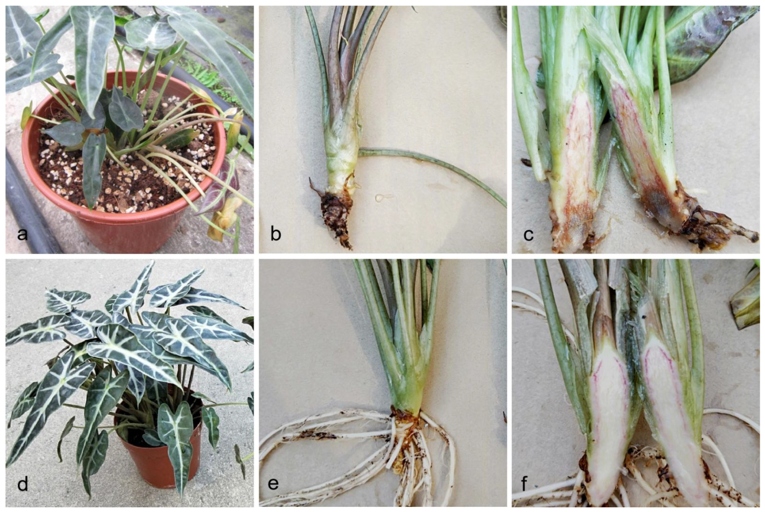
Once the pot is dry, you can repot your philodendron using a sterile potting mix. If you think your philodendron has fusarium rot, you should remove it from the pot and dispose of the potting mix. You should then disinfect the pot with a bleach solution.
Late Blight Rot
The disease can spread quickly and can kill the plant within a few weeks. Late blight rot is a serious disease that can affect philodendrons. The disease is caused by the fungus Phytophthora infestans and can cause the leaves of the plant to turn yellow and brown and the stem to rot. There are several ways to prevent the disease from spreading, including:
-Watering the plant at the base, not from above
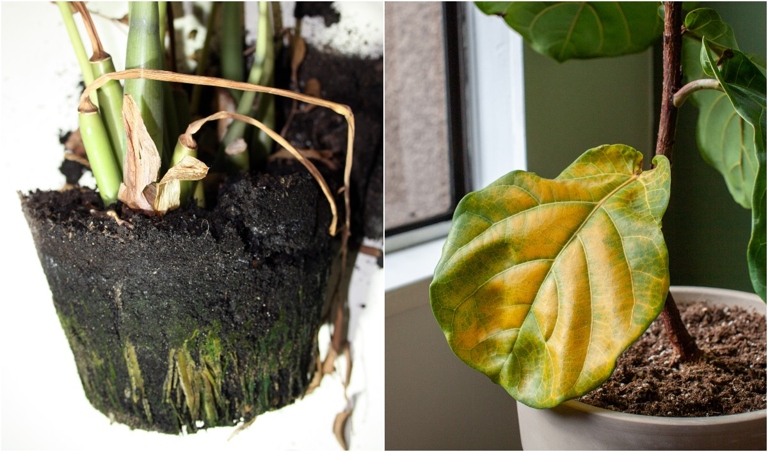
-Avoiding overhead watering
-Keeping the plant in a well-ventilated area
-Not overcrowding the plant
-Removing infected leaves from the plant
The disease is difficult to treat and can quickly kill the plant if it is not treated properly. If you think your plant has late blight rot, it is important to contact a professional for treatment.
Gray Rot
Gray rot can affect both the leaves and the roots of the plant. The disease is characterized by brown or black lesions on the leaves. The affected roots may be black or brown and may be covered with a gray or brown fuzz. The center of the lesions may be gray or brown. The edges of the lesions may be raised or sunken. The disease is caused by the fungus Rhizoctonia solani. The lesions may be covered with a gray or brown fuzz. The affected leaves may turn yellow or brown and eventually die. Gray rot can spread quickly and can kill a philodendron plant within a few days. The affected plants may wilt and eventually die. The lesions may be circular or irregular in shape. Gray rot is a fungal disease that affects philodendrons.
Peripheral Rot
The affected roots will turn brown and mushy, and the plant will eventually die. Peripheral rot is a type of root rot that can affect philodendrons. This disease is caused by a fungi called Phytophthora cinnamomi, which is found in soil and water. This fungi attacks the roots of the plant, causing them to rot.

Peripheral rot can be prevented by keeping the roots of the philodendron dry. Water the plant only when the soil is dry, and never let the plant sit in water. If you suspect that your plant has peripheral rot, you can try to save it by removing the affected roots and replanting the philodendron in fresh soil. This can be done by planting the philodendron in well-draining soil and making sure that the pot has drainage holes.
What Does Philodendron Root Rot Look Like?
If you suspect your plant has root rot, take a look at the roots. They should be white or light-colored. Philodendron root rot is a serious problem for this popular houseplant. The first sign of trouble is usually yellowing leaves, followed by wilting and drooping. If they’re brown or black, that’s a sure sign of rot. The leaves may eventually turn brown and die.
There are several things you can do to treat root rot, but the most important thing is to catch it early. If you see any of the above signs, take your plant out of its pot and check the roots. If they’re brown or black, you’ll need to take action immediately.
You may also need to treat the plant with a fungicide to kill any remaining fungus. The best way to treat root rot is to replant the philodendron in fresh, sterile potting mix. Be sure to remove all of the old potting mix and roots, and disinfect the pot before adding the new mix.
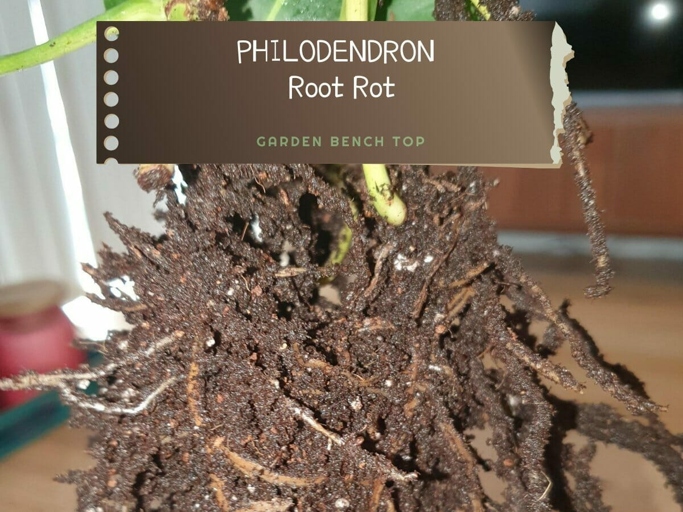
However, if the roots are severely damaged, the plant may not be able to be saved. If you catch root rot early, your plant should recover quickly. In that case, you’ll need to start over with a new philodendron.
Causes of Philodendron Root Rot
Philodendron root rot is a common problem that can be caused by a number of different factors. Poor drainage, compacted soil, and using potting mix that doesn’t contain enough organic matter can also contribute to root rot. Overwatering is the most common cause, as it leads to soggy soil that doesn’t drain well. This can cause the roots to rot, leading to a decline in the plant’s health.
Once root rot has set in, it’s important to take action to save the plant. If the plant is too far gone, it may need to be replaced. Remove the affected roots and replant in fresh, well-draining soil.

Water only when the soil is dry to the touch and make sure the pot has good drainage. Preventing root rot is the best solution. If you’re using a potting mix, make sure it contains plenty of organic matter. With proper care, you can keep your philodendron healthy and free from root rot.
Overwatering
Overwatering is one of the leading causes of philodendron root rot. The roots of the plant are unable to take up water and nutrients from the soil, leading to the plant’s demise. Overwatering can also lead to fungal growth and disease, which can further damage the plant.
There are a few telltale signs that your philodendron is being overwatered. If you see these signs, it’s important to take action to save your plant. The leaves will begin to turn yellow and drop off, the stem will start to rot, and the plant will generally appear wilted and unhealthy.
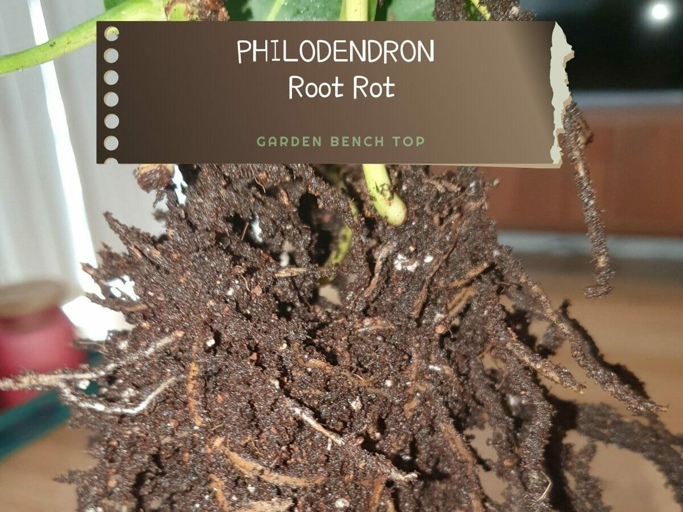
This will give the roots a chance to recover and start taking up water again. First, you can allow the soil to dry out completely between waterings. There are a few solutions to overwatering. Second, you can add a drainage layer to the pot to help excess water escape. Third, you can repot the plant in a pot with drainage holes.
By following these tips, you can save your plant and keep it healthy for years to come. If you suspect that your philodendron has root rot, it’s important to take action immediately.
Solutions
First, you need to identify the signs and symptoms of root rot. If you see any of these signs, it’s important to act quickly. If you think your plant has root rot, there are a few things you can do to try and save it. These include yellowing leaves, wilting, and stunted growth.
One is to remove the affected plant from its pot and replant it in fresh, sterile potting mix. You can also try using a root rot fungicide. There are a few different ways to treat root rot. If you catch the problem early enough, these solutions can often save your plant.
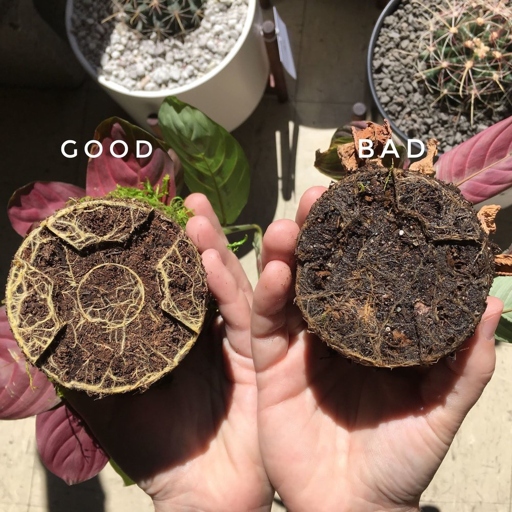
Make sure you’re using a well-draining potting mix and that your pots have drainage holes. Water your plants regularly, but don’t allow them to sit in water. However, the best way to prevent root rot is to take steps to avoid it in the first place. And finally, be sure to inspect your plants regularly for any signs of stress or disease.
Test Moisture Level
Root rot is caused by too much moisture in the soil, which can lead to fungal growth and eventually kill the plant. When it comes to houseplants, one of the most common problems is root rot.
There are a few ways to test the moisture level of your soil to see if it’s too wet. One way is to simply stick your finger into the soil. If it feels wet, then the soil is too moist and you need to take action to dry it out.

Another way to test the moisture level is to use a moisture meter. These devices are inserted into the soil and will give you a reading of the moisture content. If the meter reads above 50%, then the soil is too wet and you need to take steps to dry it out.
The best course of action is to cut away the affected roots and replant the plant in fresh, dry soil. If they are brown and mushy, then it’s likely that the plant has root rot. If you think your plant has root rot, the first thing you should do is remove it from the pot and inspect the roots.
Test The Weight of Your Pot
If it does, then it’s likely that the roots are rotted and you’ll need to take action to save your plant. When it comes to Philodendron Root Rot, one of the first things you should do is test the weight of your pot. A good way to do this is to place your hand on the pot and see if it feels light.
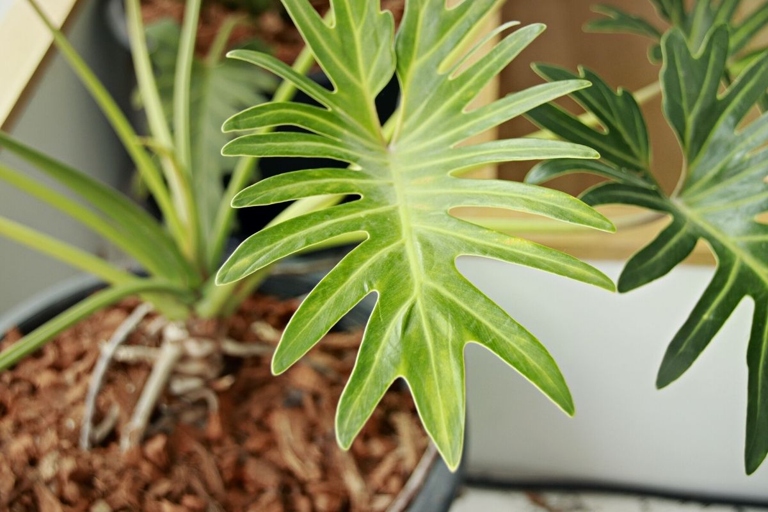
Let the soil dry out completely between waterings, and make sure the pot has good drainage. If you think you might be guilty of this, then the first thing you need to do is cut back on the amount of water you’re giving your plant. There are a few things that can cause Philodendron Root Rot, but the most common is overwatering.
If you catch the root rot early, then you may be able to save your plant. But if it’s too far gone, then you’ll need to start over with a new one.
Test Moisture of The Soil
To test the moisture, stick your finger about an inch into the soil. The soil should be moist, but not soggy. If the soil is dry, give the plant a good watering. If the soil is soggy, it’s time to take action to save your plant. If you think your plant may be suffering from root rot, the first step is to test the moisture of the soil.
Poor Drainage
If you notice that your philodendron’s leaves are yellowing, wilting, or otherwise looking unhealthy, it may be a sign of poor drainage. Poor drainage can lead to a condition called root rot, which can be fatal to your plant.
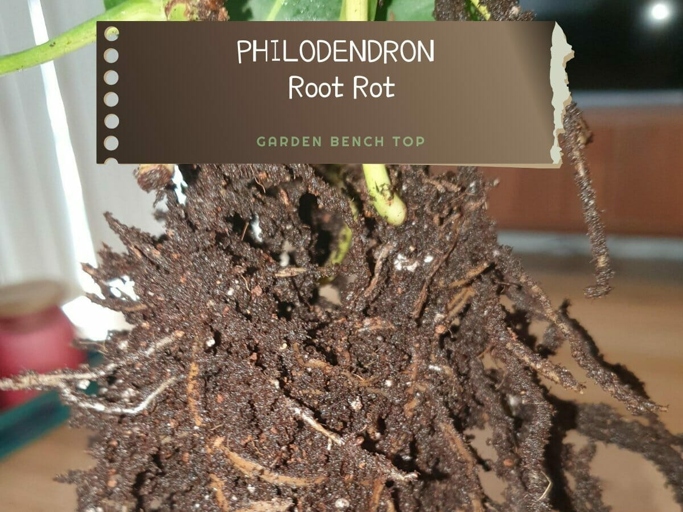
If your pot doesn’t have drainage holes, you can add some rocks or gravel to the bottom to help with drainage. There are a few things you can do to improve drainage in your plant’s pot. First, make sure you’re using a well-draining potting mix.
Allowing the soil to dry out completely between waterings will help to prevent root rot. You should also make sure you’re not overwatering your plant. Water only when the soil is dry to the touch.
If you think your plant may already have root rot, you can try to save it by carefully removing it from the pot and washing the roots with a fungicide. However, it’s often best to start with a new plant, as root rot is difficult to treat and often fatal.
Solutions
Root rot is a serious problem because it can kill the plant. However, philodendron plants are susceptible to root rot, which can be caused by overwatering or poor drainage. Philodendron is a very popular houseplant because it is very easy to grow.
Third, if you think your plant has root rot, you should remove it from the pot and replant it in fresh soil. Second, make sure that the plant has good drainage. There are a few things you can do to prevent root rot. First, make sure that you water your philodendron plant regularly.

If you think your plant has root rot, you should take it to a nursery or garden center. They will be able to help you diagnose the problem and give you the best solution.
Poor Drainage Capacity Soil
When it comes to drainage, not all soils are created equal. Some soils have very poor drainage capacity, which can lead to a number of problems.
This is because waterlogged soils don’t allow roots to get the oxygen they need to stay healthy. One of the most common problems associated with poor drainage is root rot. Over time, the roots will start to decay, which can eventually kill the plant.
You can also add perforated drainage pipes to help excess water to drain away. One is to add organic matter, such as compost, which will help to aerate the soil. There are a few things you can do to improve drainage in your soil.

With proper care, your plant should recover and thrive. If you have a plant that is already suffering from root rot, the best thing you can do is to remove it from the soil and replant it in fresh, well-draining soil.
Solutions
If you think your plant has root rot, the first step is to check the roots. If they are discolored or mushy, it’s likely that your plant has root rot. There are a few things you can do to save your plant if it has root rot.

The first solution is to replant the philodendron in fresh, sterile potting mix. If the root rot has spread to the stem, you may need to cut away the affected parts. Be sure to remove any affected roots.
There are a few different fungicides you can use, but make sure to choose one that is specifically for root rot. Another solution is to treat the plant with a fungicide. Follow the instructions on the label.
If you catch root rot early, you may be able to save your plant. But if the plant is too far gone, it’s best to start fresh with a new plant.
Pathogenic Infection
These fungi attack the roots of the plant, causing them to rot. The rot can spread to the stem and leaves, causing the plant to die. It is caused by a variety of fungi, including Phytophthora, Pythium, and Rhizoctonia. Pathogenic infection is a serious problem for philodendrons.
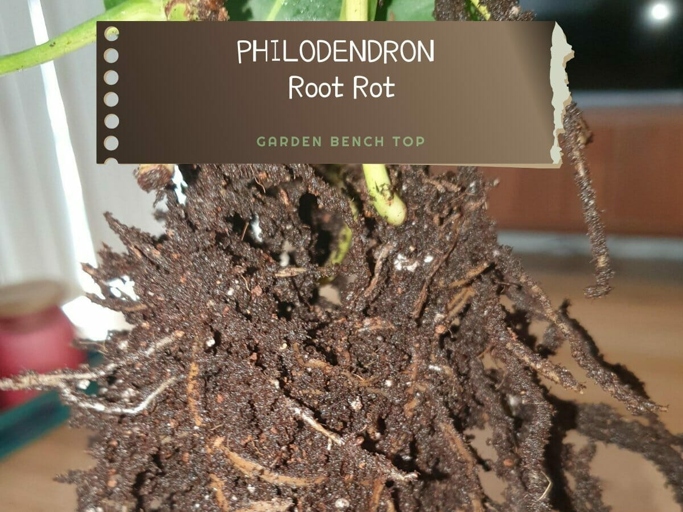
These plants need at least four hours of direct sunlight each day. If you live in an area with high humidity, make sure to provide good air circulation around your plant. Overwatering can lead to fungal growth. Second, water your plant only when the soil is dry. There are a few things that you can do to prevent pathogenic infection. First, make sure that your philodendron is getting enough light. Finally, if you see any signs of infection, such as yellowing leaves or root rot, remove the affected parts of the plant immediately.
If you take these precautions, you should be able to keep your philodendron healthy and free of pathogenic infection.
Solutions
Luckily, there are some things you can do to save your plant. Philodendron root rot is a serious problem that can kill your plant.
Philodendron root rot is caused by a fungus that attacks the roots of the plant. If you suspect that your plant has root rot, check the roots for signs of decay. The roots will be discolored and mushy. The first step is to identify the problem. The fungus thrives in wet, humid conditions.

If the pot does not have drainage holes, add some. If the pot does have drainage holes, make sure they are not blocked. The first step is to improve the drainage in your pot. Once you have identified the problem, you need to take action to save your plant.
Cut away the mushy, discolored roots with a sharp knife. Be sure to disinfect the knife before and after use. Next, you need to remove the affected roots.
Finally, you need to replant the philodendron in fresh potting mix. Be sure to water the plant carefully, as too much water can kill the plant.
With proper care, your philodendron should recover from root rot and continue to thrive.
Bacterial Soft Rot
Bacterial soft rot is a serious disease that can affect philodendrons. These bacteria cause the plant’s roots to rot, which can lead to the plant’s death. The disease is caused by a number of different bacteria, including Pseudomonas solanacearum, Erwinia carotovora, and Pseudomonas cichorii.
The plant may also produce fewer flowers and fruits. The disease is most commonly found in plants that are grown in poorly drained soils. Symptoms of bacterial soft rot include wilting, yellowing leaves, and stunted growth.
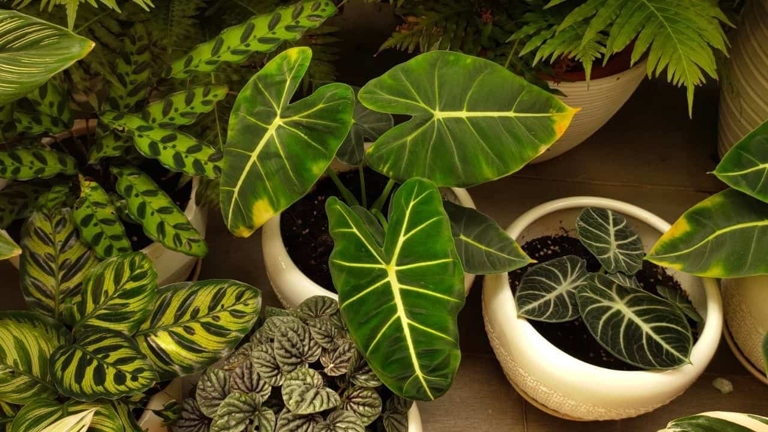
To control bacterial soft rot, it is important to water philodendrons only when the soil is dry. If the disease is severe, the plant may need to be destroyed. The plants should also be grown in well-drained soils.
Solutions
Philodendron Root Rot (Signs, Causes And Solutions)
The condition is caused by a variety of fungi, including Phytophthora and Pythium, which attack the roots and cause them to rot. Root rot is a common problem with philodendrons (Philodendron spp. ), especially when they are grown in containers.
Symptoms of root rot include yellowing leaves, wilting, and stunted growth. The leaves may also drop off. The affected roots will be brown and mushy.
It can also be caused by poorly drained soils, or by planting the philodendron in a container that is too small. Root rot is often caused by overwatering, which creates conditions that are conducive to fungal growth.

If you suspect that your philodendron has root rot, remove it from the pot and inspect the roots. To prevent root rot, water the philodendron only when the soil is dry to the touch. Be sure to plant it in a well-drained potting mix, and choose a container that is large enough to allow for proper drainage. If they are brown and mushy, you will need to remove them and replant the philodendron in fresh potting mix.
Size of Your Pot
When it comes to Philodendron root rot, the size of your pot matters. If you have a small pot, the roots will be more likely to rot. If you have a larger pot, the roots will have more room to grow and will be less likely to rot. This is because the roots will be more confined and will have less room to grow.

If you think your plant has root rot, it is important to act quickly. The first step is to remove the plant from the pot and inspect the roots. If you see any roots that are brown or black, these are the ones that are affected by root rot. Root rot is a serious problem for Philodendrons and can lead to the death of the plant.
Once you have removed the affected roots, you need to replant the Philodendron in a new pot with fresh potting mix. You can do this by cutting them off with a sharp knife. Once you have identified the affected roots, you need to remove them.
If you take these steps, you should be able to save your Philodendron from root rot.
Solutions
Philodendron Root Rot (Signs, Causes And Solutions)
Philodendron root rot is a serious problem that can kill your plant. The first step to solving this problem is to identify the signs and causes.

The leaves may also fall off the plant. The most common sign of philodendron root rot is wilting leaves. This is usually followed by yellowing and browning of the leaves. If you see these signs, it’s important to act quickly.
The main cause of philodendron root rot is too much water. This can be caused by over watering, or by watering the plant with water that is too cold. The roots of the plant are unable to get the oxygen they need and start to rot.
This can be done by removing the plant from its pot and letting it sit in a dry, sunny location for a few days. The best solution for philodendron root rot is to let the plant dry out. Once the plant is dry, you can replant it in fresh, well-draining soil.
However, if the problem is left untreated, it will kill the plant. If you catch philodendron root rot early, it can be easily fixed. Be sure to keep an eye out for the signs and take action quickly if you see them.
Low Temperature
Philodendrons are tropical plants that prefer warm, humid conditions. If you notice your philodendron leaves turning yellow and wilting, it may be a sign of low temperature stress. When temperatures dip below 60 degrees Fahrenheit, philodendrons can suffer from root rot, leaf drop, and stunted growth.
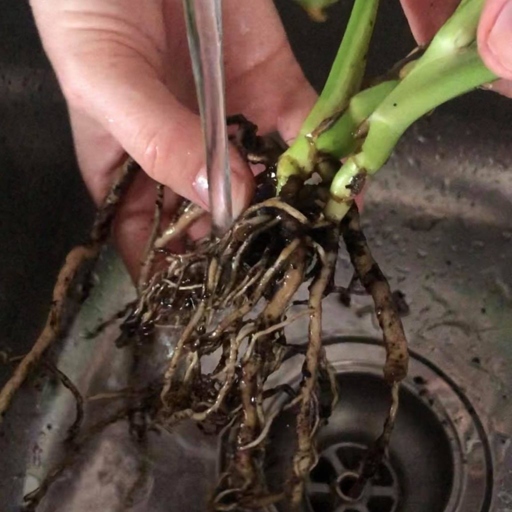
If the temperature does drop, make sure to increase the humidity around the plant. To prevent low temperature stress, make sure to keep your philodendron in a warm, humid environment. You can do this by misting the leaves or placing the pot on a tray of pebbles and water.
With proper care, your philodendron should recover from low temperature stress. Move it to a warmer location and increase the humidity. You can also try to gently remove any affected leaves or roots. If your philodendron is already showing signs of stress, try to improve the conditions around the plant.
Proper Solutions
However, even the most easy-care plants can get sick. One of the most common problems with philodendrons is root rot. Philodendron is a popular houseplant that is known for its easy care.
This can happen if the plant is overwatered or if the pot does not have proper drainage. Root rot can also be caused by a fungus or bacteria. Root rot is caused by a build-up of water in the soil.
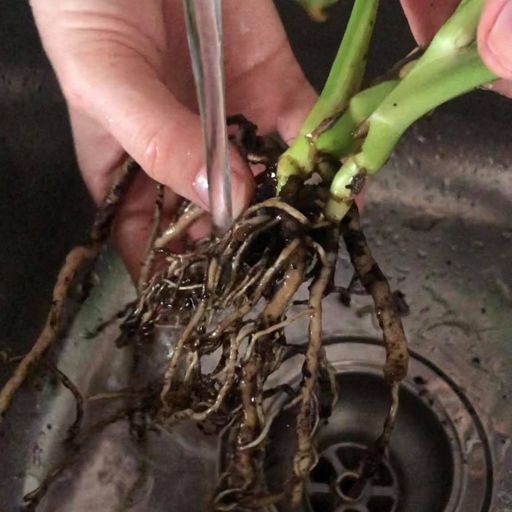
The stem may also start to rot. If you see these signs, it’s important to take action immediately. The first sign of root rot is usually wilting leaves. The leaves will turn yellow or brown and may drop off the plant.
If you think your plant has root rot, you can try to save it by replanting it in fresh, dry soil. The best way to prevent root rot is to water your philodendron only when the soil is dry. Be sure to empty the saucer under the pot after watering so that the plant does not sit in water.
How to Treat Philodendron Root Rot?
Philodendron root rot is a serious problem that can kill your plant. If you see these signs, it is important to act quickly. The stem will become mushy and the roots will start to rot. The first step to treating philodendron root rot is to identify the problem. The leaves of your plant will start to turn yellow and drop off.
If the plant is too far gone, you may need to throw it away. The next step is to remove the affected plant from the pot. Cut away any roots that are mushy or rotting. If the plant is still alive, you can try to save it by replanting it in fresh soil.
Throw away the old soil and wash the pot with a bleach solution. This will help to prevent the spread of the disease. Once you have removed the affected plant, it is important to clean the pot.
Allow the water to drain away from the pot to prevent the roots from sitting in water. Be sure to water only when the soil is dry. Overwatering is one of the most common causes of philodendron root rot. It is also important to water your plants carefully.
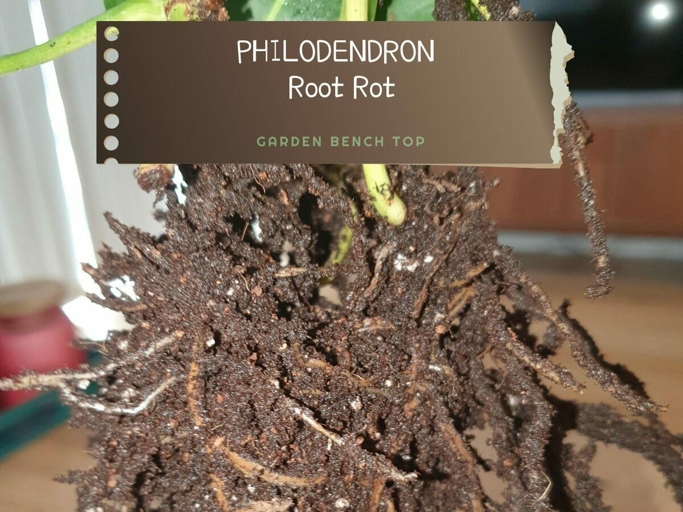
If you follow these steps, you should be able to save your plant from philodendron root rot.
Rot Restricted to Roots
And while there are many different types of root rot, one of the most common is philodendron root rot. If you’re a plant parent, you know that root rot is one of the most common problems that can plague your plants.
Philodendron root rot is caused by a fungus that attacks the roots of the plant. The fungus thrives in wet, humid conditions and can quickly spread to other plants in the same pot or container.
If the root rot is severe, the plant may die. The plant may also drop its leaves. Symptoms of philodendron root rot include yellowing leaves, wilting, and stunted growth.

To prevent philodendron root rot, make sure to plant your philodendron in well-draining soil and keep the soil moist but not soggy. Avoid overwatering and make sure the plant has good air circulation. If you see any signs of root rot, remove the affected roots and replant in fresh, sterile soil.
Repotting Your Philodendron
Here’s what you need to do: When your philodendron’s roots start to rot, it’s time to repot the plant.
Remove the plant from its current pot. 1.
If they’re mushy or black, they’re rotted and will need to be removed. Inspect the roots. 2.
3. Place the plant in a new pot with fresh potting mix.
Water the plant well and keep it in a warm, bright spot. 4.

If the roots start to rot again, you may need to repot the plant more often. 5. Keep an eye on the plant and water it as needed.
By repotting your philodendron when the roots start to rot, you can help the plant recover and prevent the problem from happening again. Philodendrons are tough plants, but root rot can be a problem.
Rot Extending into Stems
If you notice that your philodendron’s leaves are wilting, yellowing, or browning, it’s likely that the plant has root rot. The first step to solving the problem is to identify the signs of root rot. Root rot is a serious condition that can quickly kill a philodendron.
Another common sign of root rot is yellow or brown leaves. If the leaves of your philodendron are wilting, it’s a sign that the roots are not getting enough water. The most common sign of root rot is wilting leaves. This is a sign that the roots are not getting enough oxygen.
If the roots are brown or black, they are probably rotten. If you suspect that your philodendron has root rot, the best course of action is to remove the plant from its pot and inspect the roots. If the roots are healthy, you can try to save the plant by replanting it in fresh soil.
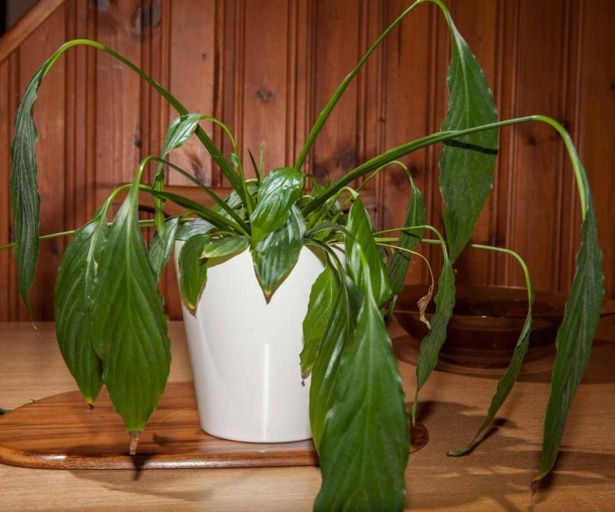
Root rot is a serious problem, but it can be solved if you catch it early. If you suspect that your philodendron has root rot, be sure to inspect the roots and take action to save the plant.
Propagating Your Philodendron
Philodendrons are a popular houseplant because they are easy to care for and can tolerate a wide range of growing conditions. One of the easiest ways to propagate philodendrons is by rooting stem cuttings in water.
To take a cutting, use a sharp knife or pair of scissors to cut a 4-6 inch piece of stem from the parent plant. Make sure to cut just below a leaf node, which is where new roots will form. Remove the bottom leaves from the cutting, and place the stem in a jar or glass of water.
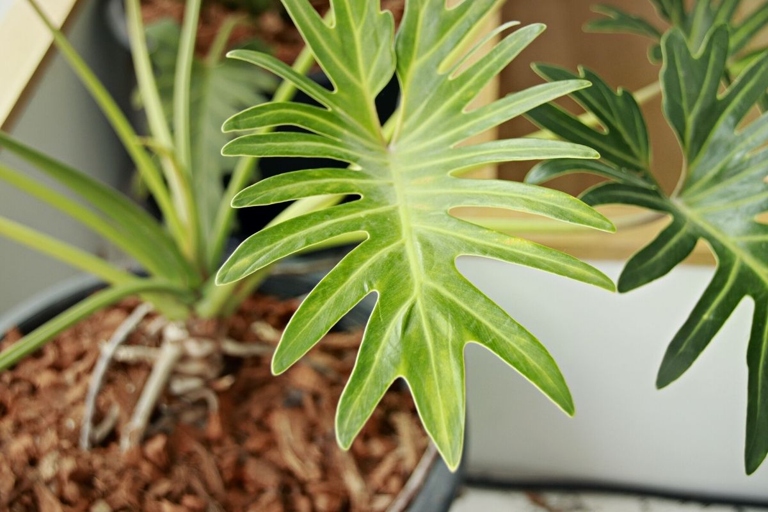
This can take anywhere from 2-8 weeks. Once the roots are 1-2 inches long, you can transplant the cutting into a pot filled with potting mix. Place the jar in a bright, indirect light and wait for new roots to form.
With proper care, your new philodendron plant should thrive. Water the soil evenly and keep the soil moist, but not soggy. Allow the top inch of soil to dry out before watering again.
Traditional Treatments
Philodendron is a tropical plant that is often found in humid environments. If you think your plant has root rot, there are a few things you can do to save it.
First, try to identify the cause of the root rot. If it is due to too much water, try to improve drainage in the pot or planting area. If the problem is due to a lack of water, make sure to water the plant more frequently.
Once you have identified the cause of the root rot, you can try some traditional treatments. Another option is to treat the plant with a fungicide. One option is to remove the affected roots and replant the philodendron in fresh soil.

However, if the plant is too far gone, it may be best to start over with a new one. If you take care of your plant and provide it with the proper environment, it should recover from root rot.
How to Prevent and Control Philodendron Root Rot?
Philodendron root rot is a serious problem for many gardeners. This disease can kill your plants and make your garden look terrible. There are several things you can do to prevent and control philodendron root rot.
If they are already sick, they are more likely to get root rot. Second, you need to water your plants properly. Third, you need to add organic matter to your soil. This will help to improve drainage and prevent root rot. First, you need to make sure that your plants are healthy. Overwatering can lead to root rot, so make sure you only water when the soil is dry.
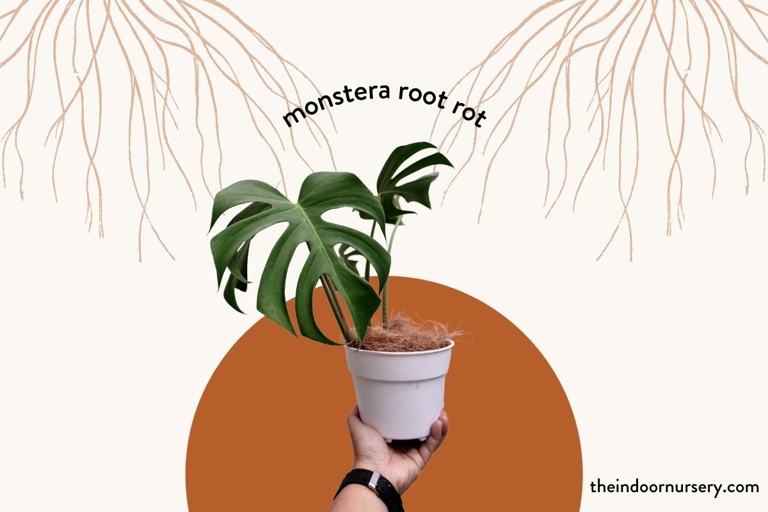
Treat the affected area with a fungicide to kill the fungus. If you already have philodendron root rot, you need to take action immediately. Remove all affected leaves and stems. You may also need to remove the entire plant if the root rot is severe.
With a little bit of care, you can prevent philodendron root rot from destroying your plants.
Avoid waterlogging
If you see this, you should check the roots to see if they’re wet. The best way to do this is to replant the philodendron in a well-draining pot. If the roots are already rotting, you’ll need to cut them off and replant in fresh soil. The first sign of waterlogging is usually yellowing leaves. Waterlogging is one of the main causes of philodendron root rot. If they are, you need to take action to dry them out. This happens when the roots are constantly wet and don’t have a chance to dry out.
Create a Watering Schedule
Root rot is caused by too much water and can lead to the death of the plant. Philodendron is a tropical plant that is often grown as a houseplant. One of the most common problems with philodendron is root rot.
If you see signs of root rot, such as yellow leaves or wilting, stop watering immediately and allow the plant to dry out. To prevent root rot, it is important to create a watering schedule. Allow the water to drain completely and do not water again until the soil is dry. Water philodendron plants when the soil is dry to the touch.

Be sure to water it carefully and only when the soil is dry. If you think your plant has root rot, there are a few things you can do to save it. If they are black or mushy, they are probably rotten and will need to be cut away. Next, replant the philodendron in fresh, well-draining potting mix. First, remove the plant from the pot and inspect the roots.
Use Appropriate Soil Mix
When it comes to planting philodendrons, it is important to use an appropriate soil mix. It is also important to make sure that the mix is not too dense, as this can lead to root rot. The mix should be well-draining and rich in organic matter.
If you are unsure about what type of soil mix to use, it is always best to ask a professional at your local nursery or garden center. They will be able to advise you on the best type of mix for your particular plant.

Once you have the right soil mix, it is important to water your philodendron regularly. This will help to prevent root rot and keep your plant healthy.
Avoid Buying Sick Plants
When you’re buying a new plant, it’s important to inspect it for signs of disease or pests. If you suspect that a plant you’re considering is sick, it’s best to avoid buying it. Unfortunately, sometimes sick plants can end up in stores.
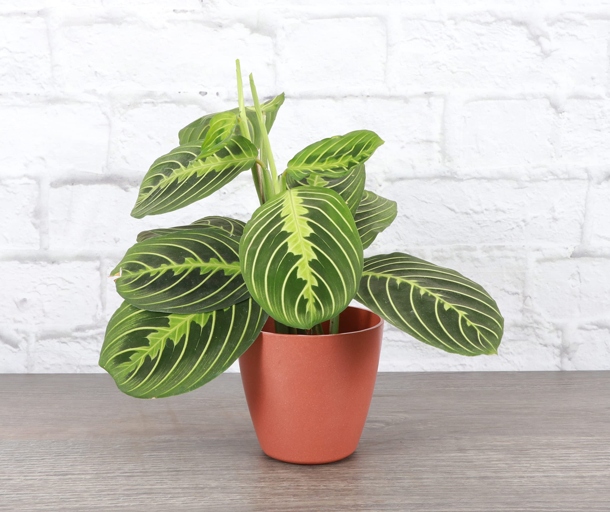
It’s also important to smell the plant. If the leaves are yellow or brown, if the stem is soft or discolored, or if there are any visible pests, the plant is likely sick. There are a few things to look for when you’re inspecting a plant. If it has a sour or rotting smell, it’s probably not healthy.
If you do end up buying a sick plant, there’s a chance you can nurse it back to health. However, it’s often best to return the plant to the store and get a refund. Sick plants can be difficult to care for and they can also spread disease to your other plants.
So, when you’re plant shopping, be sure to inspect your potential purchases carefully. Avoid sick plants to keep your home garden healthy and happy.
Perform Proper Maintenance of your Equipment
This includes regularly cleaning your pots and tools, as well as providing adequate drainage for your plant. If you want your philodendron to stay healthy, it is important to perform proper maintenance of your equipment.
Philodendrons are susceptible to root rot, so it is important to make sure that the roots are not sitting in water. It is also important to provide adequate drainage for your plant. Allowing the roots to dry out between watering will help to prevent this problem. Cleaning your pots and tools on a regular basis will help to prevent the spread of disease and pests.
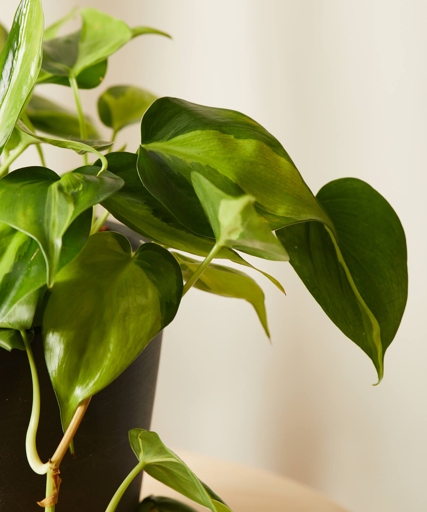
By following these simple tips, you can help to ensure that your philodendron stays healthy for many years to come.
Final Words
When it comes to houseplants, few are as popular as the philodendron. With its large, glossy leaves and easy-care nature, it’s no wonder this plant is a mainstay in so many homes. But even the most resilient plants can succumb to problems, and one of the most common problems philodendrons face is root rot.
The cause of root rot is usually overwatering, which leads to soggy, waterlogged soil. This creates the perfect environment for fungal diseases to take hold. Root rot is a serious condition that can quickly kill a philodendron. The first sign of root rot is usually yellowing leaves, followed by wilting and eventually, death.

If you think your philodendron has root rot, the best course of action is to remove it from the pot and inspect the roots. However, if only a small portion of the roots are affected, you may be able to save the plant by carefully removing the affected roots and replanting in fresh, well-draining soil. If they are brown and mushy, then the plant is probably beyond saving.
Preventing root rot is the best way to deal with this problem. If you live in an area with high humidity, consider placing your philodendron in a terrarium or terrarium-like setup to help keep the roots dry. Be sure to only water your philodendron when the top inch of soil is dry. Allow the plant to drain thoroughly after watering and never leave it sitting in water.
By following these simple tips, you can help keep your philodendron healthy and free from root rot.
Frequently Asked Questions
1. What is philodendron root rot?
2. What are the signs of philodendron root rot?
3. What are the causes of philodendron root rot?
4. What are the solutions for philodendron root rot?
5. How can I prevent philodendron root rot?
1. Philodendron root rot is a condition that affects the roots of the plant, causing them to rot.
2. The signs of philodendron root rot include yellowing leaves, wilting, and stunted growth. The plant may also lose its leaves and eventually die.
3. The causes of philodendron root rot include overwatering, poor drainage, and compacted soil.
4. The solutions for philodendron root rot include improving drainage, allowing the soil to dry out between watering, and removing affected roots.
5. To prevent philodendron root rot, water the plant only when the soil is dry and avoid overwatering.
Final thoughts
Philodendron root rot is a serious problem that can kill your plant. The best way to prevent it is to water your plant regularly and to keep the soil moist but not soggy. If you think your plant has root rot, you should remove it from the pot and inspect the roots. If they are black and mushy, you will need to cut them off and replant the philodendron in fresh, sterile potting mix.
